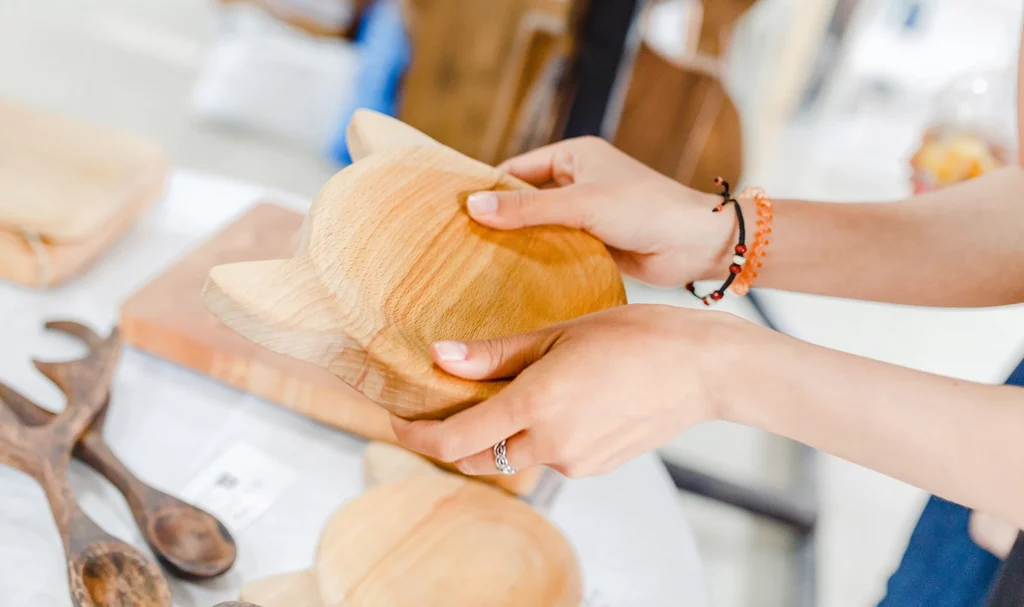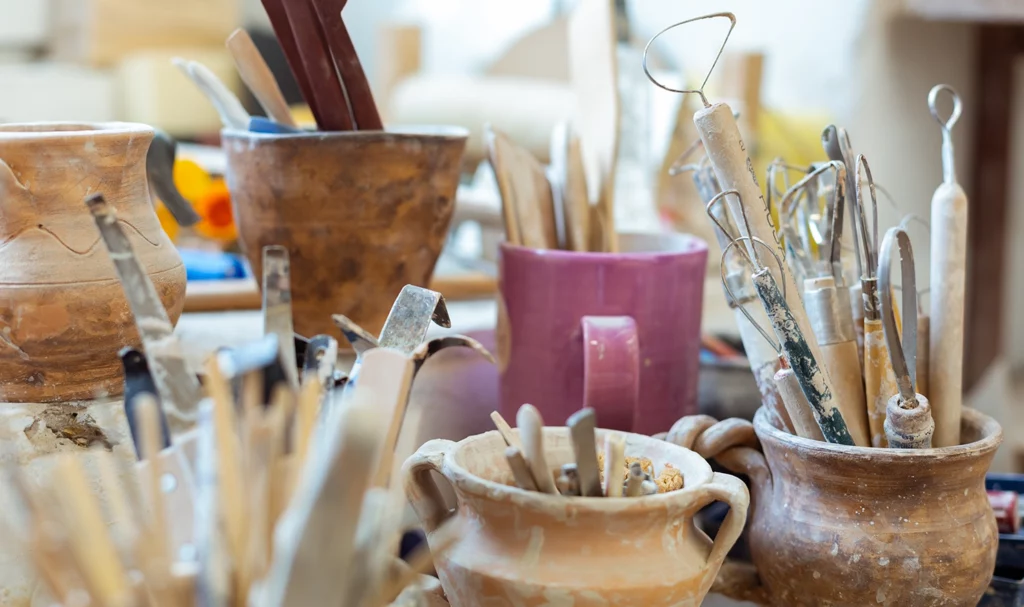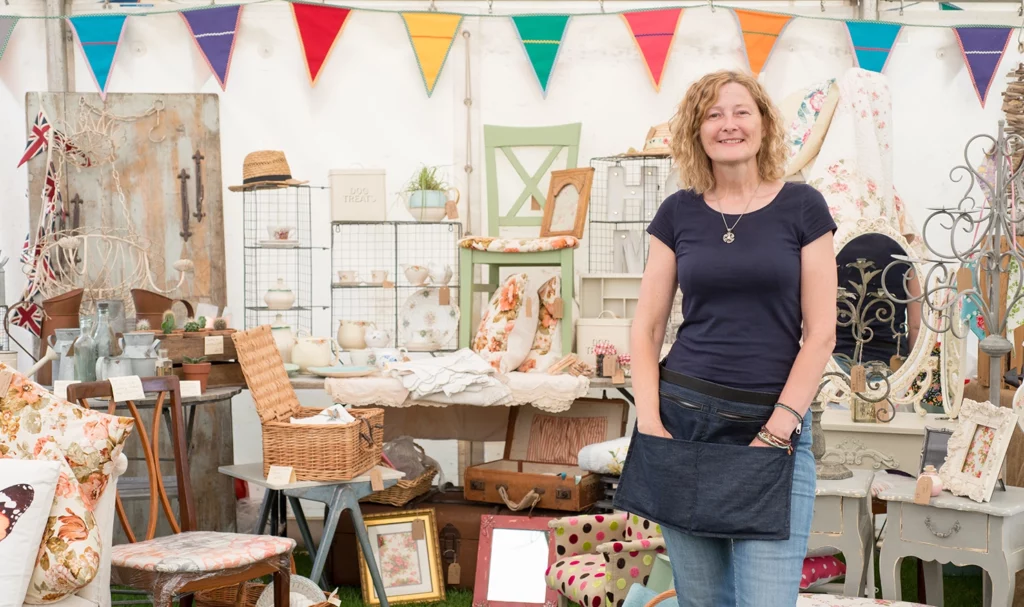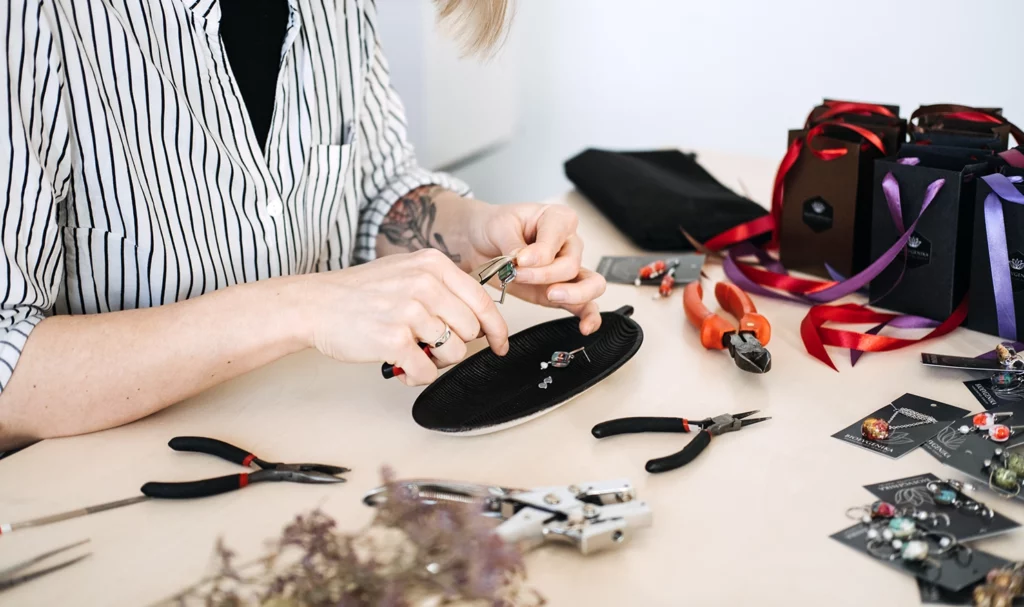Cue the smell of fresh paint, warm wax, or a well-loved glue gun.
Running a handmade business means your heart and soul (and maybe a little glitter) go into every product you make. But while you’re stitching, shaping, soldering, or sculpting, one thing often gets left off the to-do list: handmade business insurance.
Let’s fix that.
Coverage Basics for a Handmade Business
Think of handmade business insurance as the bubble wrap for your business: it protects you from the kinds of mishaps that can sneak up and ruin your day, like someone tripping over your booth display or a customer getting a rash from your product.
Whether you sell online, in person, or both, artisan liability insurance helps cover the unexpected, so you can get back to doing what you love.
These are the most common types of insurance coverage your handmade business may need:
General Liability – Coverage for Business Mishaps

🖌️ General liability insurance helps cover medical bills, legal fees, and even repair or replacement costs if you’re held responsible for someone else’s injuries or damages.
Let’s say a customer trips over your tent weights at a market and sprains their ankle. Or you spill paint on a boutique owner’s brand-new velvet couch while delivering artwork. This coverage is like having an ‘oops, my bad’ safety net for those moments.
Product Liability – Coverage for Product-Related Accidents

🖌️ Product liability insurance is designed to cover legal fees, damages, or medical costs related to an incident caused by your handmade products.
Imagine your hand-dyed towels use all-natural dyes, but a customer who is unknowingly allergic to beets breaks out in hives. Yikes. This coverage is made to step in if your product causes harm (even if you followed all the safety rules).
Add These Finishing Touches of Additional Coverage
Your handmade business is one-of-a-kind, so your insurance coverage should be too. Here are some optional coverages worth considering:
Professional Liability – Coverage for Classes and Workshops

🖌️ Professional liability covers mistakes or misunderstandings around the advice or services you provide.
Hosting a workshop on quilting? Selling digital patterns or coaching beginner jewelers? You’ll want this insurance, which we call Workshop & Class Coverage.
Let’s say a student claims your tutorial caused them harm (physical, emotional, or financial). This coverage has your back for damages or legal fees.
Inland Marine – Coverage for Theft and Damage

🖌️ Inland marine insurance covers your inventory and equipment against third-party theft and damage.
No, it has nothing to do with boats (I know, confusing). That’s why we refer to this as Theft & Damage Coverage. It protects your stuff, whether it’s in your studio, on the road, or set up at a show.
Imagine your tent flies away in a windstorm or your kiln gets stolen. This coverage helps repair or replace your business equipment.
Cyber Liability – Coverage for Online Sellers

🖌️ Cyber liability insurance helps your business recover in the case of cybercrime.
If you sell on Etsy, Amazon Handmade, Shopify, or your own site, listen up. We call this Data Breach Insurance on ACT, and it’s like digital duct tape that can save your online business.
Let’s say your customers’ info is compromised in a data breach, your website gets hacked, or you fall for a phishing scam. This coverage helps you and your customers recover from a cyber attack.
What Your Policy Won’t Cover
Insurance isn’t a magic wand, but knowing the limits helps you stay protected. These are examples of claims that don’t make the coverage cut:
Cyber Liability – Coverage for Online Sellers
Is that charm bracelet losing its shine over time? Normal use and age-related damage are the responsibility of the buyer, not your jewelry insurance.
Recalled or Knowingly Defective Items
If you knew a batch of resin earrings didn’t cure properly but sold them anyway (gasp), coverage won’t apply if someone gets hurt. Always stick with safety and integrity!
Employee or Volunteer Injuries
If you have helping hands beyond your own, like a part-time assistant or an event-day helper, injuries they receive while on the job are not covered.
Personal Injuries or Damages
You need specific endorsements if you have employees, like a part-time assistant or fulfillment helper. Otherwise, claims involving them may not be covered.

Real-World Scenarios: How Insurance Applies
Let’s take this coverage off the page and into the real world. Here’s how your coverage can work for you!
3 Benefits of Having Exhibition Insurance for Artists
Slip and Fall at a Craft Show
A customer trips over your booth setup and breaks their hip. They’re unable to work for a few weeks, and now want you to pay for their medical bills and lost wages. General liability can cover these expenses and protect your business if a lawsuit arises.
Injuries from Manufacturing Defects
You unknowingly use a faulty batch of metal that begins to corrode and cause rashes after being turned into rings. Some customers experience allergic reactions and sue for damages. Product liability can step in, even if you’re not at fault for the bad batch of metal.
Covered by: ACT Pro
Fire Damage to Inventory Before a Big Fair
You work in a co-op space, and another crafter accidentally starts a fire. The flames destroy weeks of inventory right before a major show. Theft & Damage Coverage can replace the materials used to recreate the damaged items.
Covered by: ACT Pro with Theft & Damage Coverage added

Craft the Perfect Coverage for your Handmade Business
Let’s face it: you’re an artist, not an insurance expert! Protecting your business is kind of our thing, so we know the right business insurance for handmade items is your ticket to peace of mind.
Here’s how you can keep your policy polished, leaving you free to create without worrying about the what-ifs.
Providing Proof of Insurance
Many craft fairs, studios, or retailers require a Certificate of Insurance (COI). With ACT, you can download a certificate online, anytime, at no cost.
Anytime you add a new additional insured to your policy, a copy of your COI will be sent to the additional insured’s email address you provide.
Reviewing Exclusions
Read your policy like you’d read the instructions on a new craft machine (okay, maybe a little more carefully). Know what is and what isn’t covered, so you’re not caught off guard if you need to file a claim in the future.
Updating Your Policy
Attending a show? Thinking about selling a new product? Hit a new revenue milestone after trying online sales last year? Your coverage can grow with you.
Update your policy at least once a year before you renew, or anytime you make a major change. You can easily manage your information online from your dashboard.

FAQs About Insurance for Handmade Items
Do I Need Insurance to Sell Handmade Crafts?
Yes, you need insurance to sell handmade crafts — online, in-person, and anywhere in between! Many venues require it, and one accident can cost more than a year’s worth of coverage. It’s better to be safe (and covered) than sorry.
Does Handmade Insurance Cover Me at Craft Fairs or Pop-up Events?
Yes, ACT’s handmade insurance covers you at craft fairs and pop-up events. That’s one of our main perks!
The ACT Pro policy is specifically built for year-round coverage, so whether you’re doing one show or twenty, you’re protected.
Can I Get Insurance if I Make Unique or Unusual Handmade Items?
Yes, you can get insurance if you make unique or unusual handmade items. ACT covers a wide variety of handmade goods. Just be sure to review your specific product type against our exclusions list, or contact us if you’ve created a product that’s wonderfully weird.
How Much Does Handmade Insurance Cost?
Handmade insurance starts at $24.25/month with ACT Pro or $49/event with ACT Go. That’s less than what you probably spend on art supplies every few months, and it could save your business thousands!


